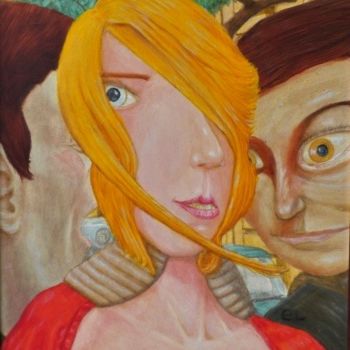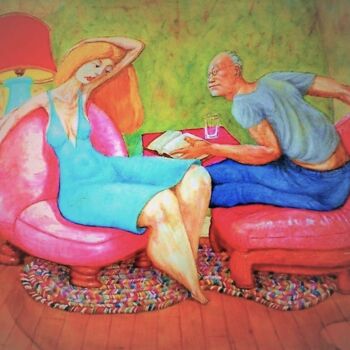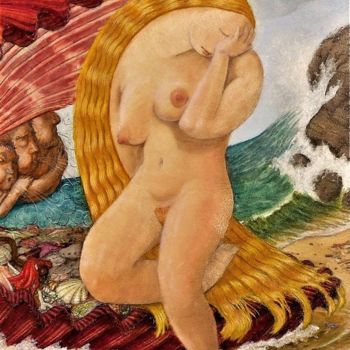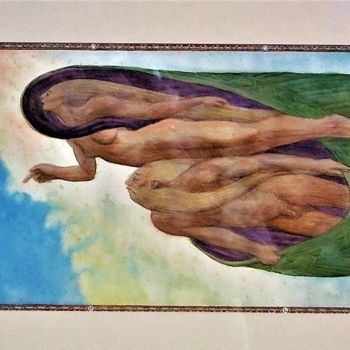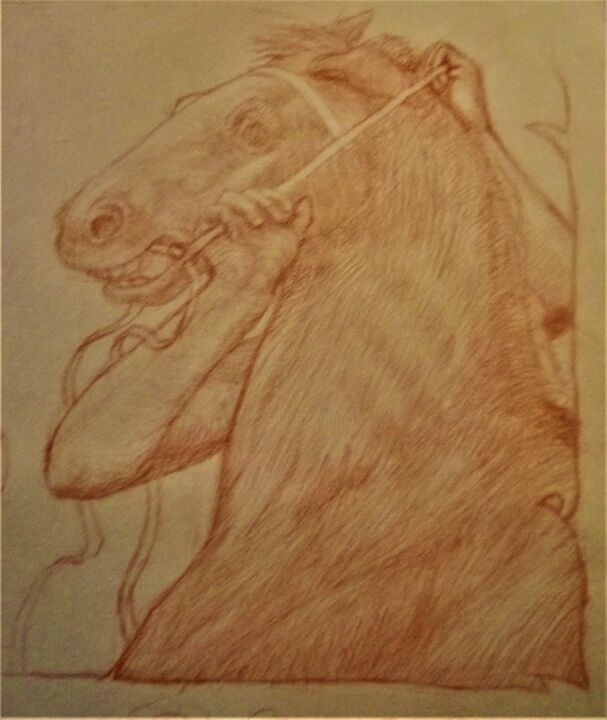


Let us know if you would like to see more photos of this artwork!
- Back of the work / Side of the work
- Details / Signature / Artwork's surface or texture
- Artwork in situation, Other...
Study for Taming of Bucephalus (1978) Drawing by Edwin Loftus
More info
- Packaging (Tube) All artworks are shipped with a premium carrier, carefully protected and insured.
- Tracking Order tracking until the parcel is delivered to the buyer. A tracking number will be provided so that you can follow the parcel in real-time.
- Delay Worldwide delivery in 3 to 7 days (Estimate)
More info
- Trackable Online Certificate of Authenticity Authenticity Certificates can be verified online at any moment by scanning the artwork code.
- Artist Value Certification Experts study the work and career of an artist then establish an independent and reliable average price value. The average price value situates the artist on a price range for a given period. The experts may also be asked to establish a more precise estimate for a particular work.
More info
100% secure payment with SSL certificate + 3D Secure.
More info
This image is available for download with a licence
Sold by Edwin Loftus
-
Original Artwork (One Of A Kind)
Drawing,
Pastel
on Paper
- Dimensions Height 20in, Width 16in
- Framing This artwork is not framed
- Categories Drawings under $1,000 Classicism Horse
Having studied Academy Style under Thomas Sherwood, I was experimenting with adapting those techniques to something more practical in the American Market, (which, under 'Progressive' domination has been authoritarian and actively suppressive of and dismissive toward, representational art). This represents an advanced stage in a process including skeletal and muscular studies and which culminated in a final drawing in black and white, (now in a private collection).
In the history of Western Art, the Academies and Salons of the 19th Century into the 20th achieved the highest degree of perfection in the reproduction of the visual experience since the Golden Ages of Greco-Roman civilization, and thanks to technological breakthroughs, probably exceeded that height. Under the influence of figures like David and Ingres, this system became authoritarian and oppressive, leading to revolutions like the "Salon of the Refused" and the anti-establishment revolutions of the Realists and Pre Raphaelites, (who wanted to irradicate all post-Medieval art to "free" art from its authoritarianism.)
These revolts were needed, but opened the door to a new system of oppression which promoted art as a vehicle for a conceptual revolution, in which the significance of artist's work became a hypothetical exploration of the nature of perception. Wrapped in terms like; "leading, pushing, cutting edge, pushing the envelope, compelling, challenging, expanding, and on and on ... and enforced by an incestuous New York centered Art Establishment, which dictated to art museums, galleries, journals, schools, grant agencies, award and prize juries, etc. what could and could not be called "Art" as opposed to "mere" craft and commercial illustration.
This dictatorial system thrived in the United States, virtually eliminating that option, while surviving in places like the Soviet Union, Warsaw Pact Nations and People's Republic of China, (where "Modernist" arts were considered "decadent" and unworthy of support).
In the United States of America, the oligarchy-bureaucracy-market influencer triad continues its stranglehold on the Art Market and Representational Art continues to have to fight for the recognition it deserves. This drawing has a place in the history of that struggle. Thomas Sherwood was an academy trained student of Geno Barcsay's teachings, unable to get recognition or support in the American Art establishment. Representational Art students at the University of Western Washington in the 1970s staged a protest and petition campaign demanding more options for representational arts and Sherwood was hired as a part-time temporary in response to that effort.
So, this drawing is also an historic artifact of an early stage in the on-going "Revolution of the Representationalists" in the American sphere of influence in the on-going evolution of Art and its future history.
The Academy/Salon history of suppression WAS foolish.
The Modernist/Oligarchy/Establishment history of suppression HAS BEEN and IS foolish.
Someday Representational and non-Representational arts will be judged on their own merits and neither will be able to claim to be the One True (important) Art. This will be the predictable future of Art, but a future that will, predictably, not come so long as Authoritarianism, (of one design or another), is the norm in our transnational civilization.
Related themes
Edwin Loftus is an American painter and draftsman born in 1951. His interest in art began at the age of 4 when he decided to draw something real rather than working from his imagination.
As a child he excelled at drawing and as a teenager he began to experiment with oil painting. In college, he took courses in art and art history and realized that true art had nothing to do with the quality of the drawing or painting, but that it had to have the ambition to push the boundaries and expand the visual experience.
He also studied philosophy, psychology and history and quickly realized that it was just another art establishment trying to defend its elitist industry and reward system. Their skills were almost non-existent, they knew nothing about psychology, perception or stimulus response, and they were extensions of the belief system that made communism, fascism and other forms of totalitarianism such destructive forces in the world. They literally believe that art shouldn't be available to ordinary human beings, but only to an elite "sophisticated" enough to understand it.
Edwin Loftus realized that the emperors of art had no clothes, but they were still the emperors. Gifted in art, he worked hard to acquire this skill. So he found other ways to make a living and sold a few artworks from time to time. For sixty years, many people enjoyed his works and some collected them.
Today, Edwin Loftus is retired. Even if he sold all his paintings for the price he asked, "artist" would be the lowest paid job he ever had... but that's the way it is. It won't matter to him after he dies. He just hopes that some people will like what he does enough to enjoy it in the future.
-
Nationality:
UNITED STATES

- Date of birth : 1951
- Artistic domains: Works by artists with a certified artist value,
- Groups: Certified Artists Contemporary American Artists




